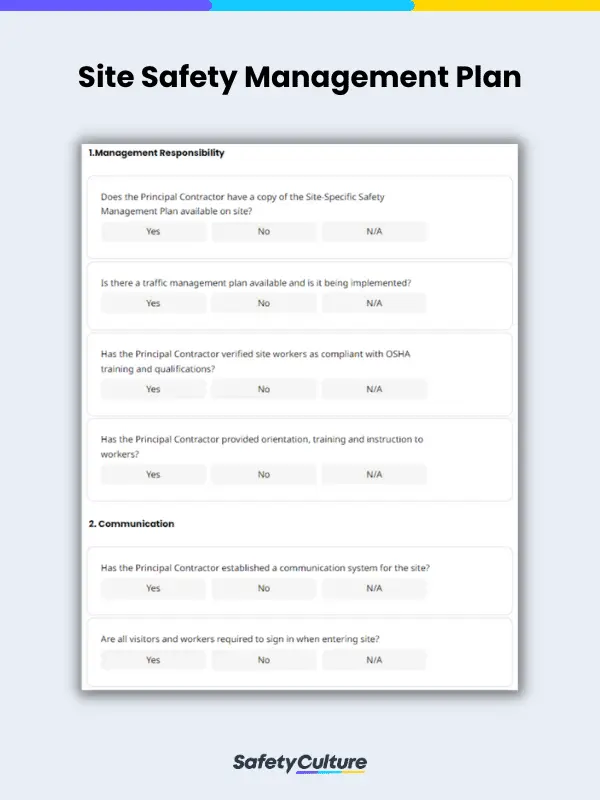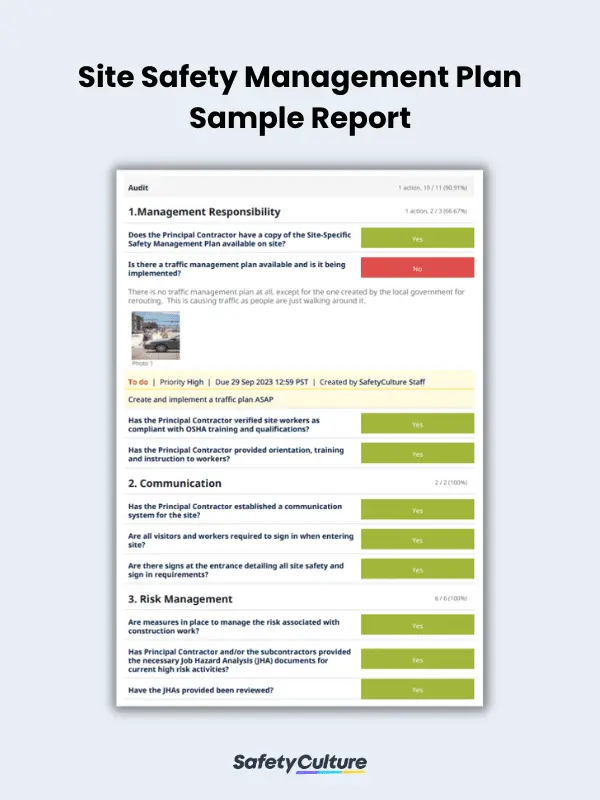What is a Safety Management Plan?
A safety management plan is a document that aims to specify and outline the specific safety procedures and arrangements necessary for a project or activity. It is a major aspect of maintaining a safety management system as it helps outline responsibilities, objectives, emergency response plans, and communication channels.
Importance and Benefits
A safety management plan serves as the cornerstone of any organization’s commitment to safety. It outlines the strategies, protocols, and procedures to follow to safeguard employees, assets, and the environment. Specifically, it aims to help with the following:
- Enhancing workplace safety and reducing injuries and illnesses
- Ensuring regulatory compliance with internal and legal safety requirements
- Identifying hazards and threats to employee safety
- Mitigating risks and addressing them
- Reporting and documenting incidents, hazards, and risks
Having a safety management plan can also help streamline and improve operations and organizational management. As it outlines all safety procedures, it can also help in designating necessary point persons in case of emergencies, as well as the roles and responsibilities of each one.
What to Include in a Safety Management Plan
Different organizations have different safety procedures to follow. However, a typical safety management plan contains fields for the following:
- Name of person preparing the plan and their personnel
- Management responsibilities
- Communication channels to use
- Risk management practices such as:
- Enforcing and implementing emergency procedures
- Presence of Job Hazard Analysis (JHA) sheets
- Observing for hazards present and identifying the mitigation measures for them
- Observed safety breaches, if any
- Additional notes and recommendations
- Sign off
Here is a sample safety management plan in use for reference:
FAQs about Safety Management Plans
A safety management plan is often used for construction and manufacturing, but it can come in different forms for different industries. Some of the most common uses include the following:
- Managing food safety
- Conducting risk assessments in hospitals, laboratories, and the like
- Ensuring immediate environment is safe for use and safe to all
A safety management system helps direct the framework for safety management as a whole in an organization. On the other hand, a safety management plan is more specific and is best suited for teams and groups. They often work together as they both aim to improve workplace safety.
Typically, it is the business owner’s, principal contractor’s, or manager’s responsibility to manage a safety management plan. However, in some cases, there can be dedicated safety personnel for the job. Team leaders are also involved in the process.




